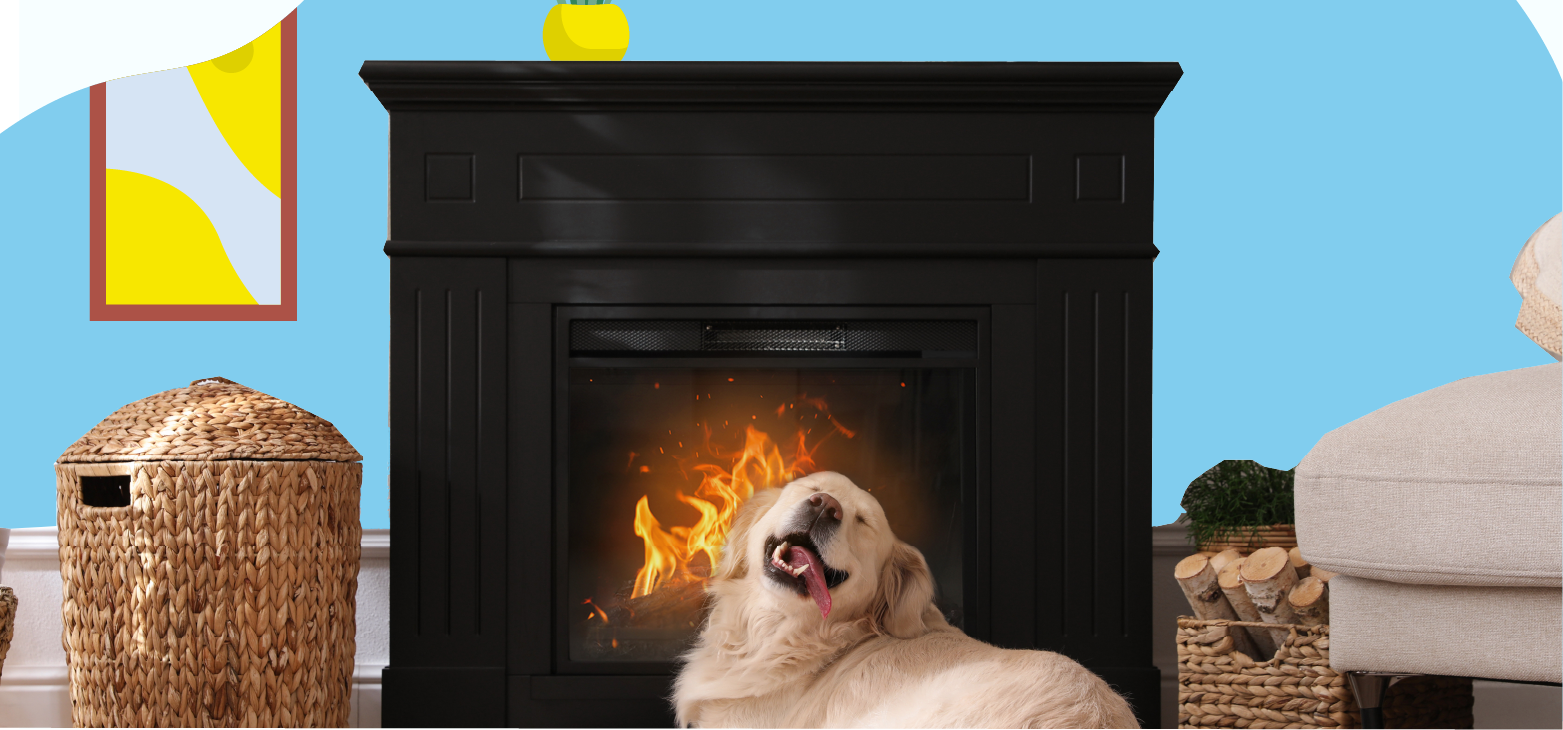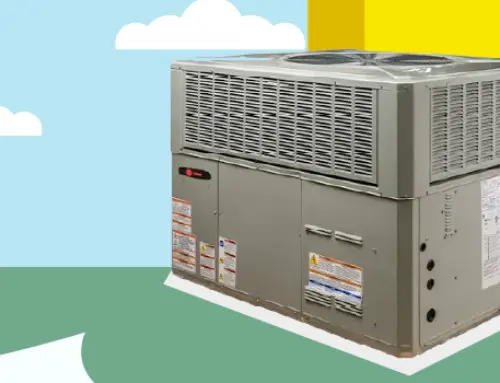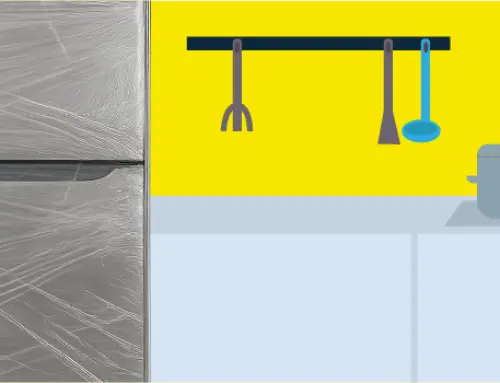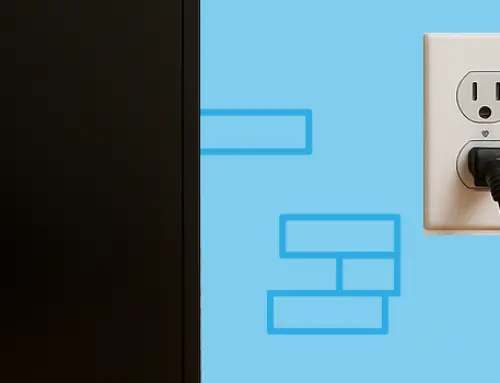Do Electric Fireplaces Use A Lot of Electricity?
by Tyler Castle
15.1 min read

Electric fireplaces have become a popular choice for homeowners seeking a clean, stylish, and convenient way to add warmth to their space without the hassle of real flames or chimney maintenance. But as energy prices rise and more households pay closer attention to their electric bills, one common question emerges: Do electric fireplaces use a lot of electricity?
We're here to unpack that question for you. We'll explore how electric fireplaces work, how much energy they consume, and whether they're an efficient and cost-effective option for heating your home. Let's dive in.
How Do Electric Fireplaces Work?
Interested in how electric fireplaces work? We've done the research for you. Electric fireplaces work by converting electricity into heat using a few different technologies. Most models use either a heating coil with a fan that blows warm air into the room, ceramic elements for consistent convection heating, or infrared quartz that radiates heat directly to objects and people.
To simulate flames, electric fireplaces rely on LED lights combined with reflective panels or rotating mirrors. We've found that some high-end models even use ultrasonic technology to create a realistic flame and smoke effect using water vapor!
These fireplaces are incredibly user-friendly, often featuring remote controls, digital thermostats, and timers for customizable comfort. Many are also smart-home compatible and offer simple installation. Simply plug your electric fireplace into a standard outlet—no venting or gas lines required.
We've also learned that maintenance on an electric fireplace is also minimal, and with cool-to-touch surfaces, no emissions, and built-in safety shutoffs, they're one of the safest heating options available today.
Types of Electric Fireplaces
If you're looking for the right electric fireplace to fit your home, you've definitely have options. We've done our research and pulled together the best types of electric fireplaces for your home. Here are some of our recommended models:
- Built-In Fireplaces: These are installed directly into a wall for a clean, seamless appearance. They're ideal for homeowners doing a renovation or new build who want a modern, permanent fireplace fixture.
- Electric Fireboxes: Electric fireboxes are self-contained fireplace units that mimic the look of a real firebox and are often used with a mantel. Perfect for those who want a traditional fireplace look without venting or complicated installation.
- See-Through Electric Fireplaces: Designed to be viewed from two sides, these units add drama and warmth between two rooms or in open floor plans. Ideal for luxury homes or design-forward spaces looking for both aesthetics and function.
- Electric Fireplace Inserts: These fit directly into existing wood-burning or gas fireplaces, converting them into clean, electric versions. Great for homeowners who want to upgrade an old or unused fireplace safely and affordably.
Are Electric Fireplaces Safe?
We've consulted Electric Fireplace Direct and can confirm, yes, electric fireplaces are among the safest heating options available for home use. Unlike traditional fireplaces, they don't use real flames or combustible fuel meaning there's no risk of carbon monoxide, smoke, or chimney fires.
Most models feature cool-to-touch exteriors, built-in overheat protection, and automatic shut-off timers for added safety. These have been tested by trusted safety organizations—UL (Underwriters Laboratories) to make sure they meet strict safety standards. For best results, plug them directly into a wall outlet, keep them away from flammable materials, and perform regular maintenance to ensure safe operation.
Do Electric Fireplaces Give Off Heat?
After our research, we can confirm that electric fireplaces give off heat. Most electric fireplaces utilize either fan-forced heaters or infrared quartz technology to generate warmth.
Most models can easily warm small to medium rooms up to 400 square feet, while higher-powered units are capable of heating larger spaces up to 1,000 square feet.
A notable advantage of electric fireplaces is their energy efficiency. Additionally, many electric fireplaces offer adjustable heat settings and a flame-only mode, allowing users to enjoy the ambiance of a fire without the heat, making them versatile for year-round use.
Are Electric Fireplaces Efficient?
Electric fireplaces are among the most energy-efficient heating options available for homeowners.
Unlike traditional wood-burning or gas fireplaces, which can lose a significant portion of heat through chimneys or vents, electric fireplaces convert nearly 100% of the electricity they consume directly into heat. This means virtually no energy is wasted, making them highly efficient for heating purposes.
Additionally, electric fireplaces offer the advantage of zone heating, allowing you to warm specific areas or rooms in your home without the need to heat the entire house. This targeted approach not only enhances comfort but also contributes to overall energy savings.
For added efficiency, many electric fireplace models come equipped with thermostatic controls and timers, enabling users to set desired temperatures and operating times. These features help maintain consistent warmth while preventing unnecessary energy consumption.
Do Electric Fireplaces Use a Lot of Electricity?
After comparing the energy consumption of an electric fireplace to other common appliances in your home, we've found electric fireplaces use a fair amount of electricity. However, at the end of the day, electric fireplaces are energy-efficient and cost-effective heating options compared to other options for heating like large furnaces.
On average, electric fireplaces with a heating function use about 1,500 watts (1.5 kilowatts) per hour, similar to a space heater. However, when operated without the heating element (for visual appeal) we found that the energy draw drops significantly, often to under 300 watts. This makes them a practical choice for creating an atmosphere without a spike in electricity usage.
Electricity Consumption of an Electric Fireplace Compared to Other Appliances in Your Home
| Appliance | Average Wattage | Usage Time | Daily Kilowatt-hour (kWh) consumption |
| Electric Fireplace | 1,500 W | 4 hours | 6.0 kWh |
| Television (LED, 54.4-inch – 57.5 inch) | 100 W | 6 hours | 0.6 kWh |
| Refrigerator | 500 W | 24 hours | 12.0 kWh |
| Microwave | 1,000 W | 0.5 hours | 0.5 kWh |
| Central Air Conditioner | 3,000 W | 8 hours | 24.0 kWh |
| Laptop | 100 W | 10 hours | 1.0 kWh |
| Space Heater | 1,500 W | 4 hours | 6.0 kWh |
| Furnace | 30,000 W | 4 hours | 120 kWh |
While 1,500 watts may sound like a lot at first glance, we've found that an electric fireplace's energy use is quite reasonable when compared to other household appliances.
For instance, it consumes about half the amount of electricity daily as a refrigerator—and far less than energy-intensive systems like central air conditioners. When it comes to comparing other heating options, we've calculated that electric fireplaces use around the same amount of energy with the heating function on your electric fireplace turned on.
The real difference we found was the energy consumption between electric fireplaces and furnaces. Putting our energy experts to work, they found that depending on your model, electric furnaces can draw around 30,000 watts (30 kW) when active. Over a 4-hour period, that equates to 120 kWh—20 times more energy than the electric fireplace.
Meanwhile, everyday items like laptops, televisions, and microwaves all use considerably less energy than an electric fireplace but serve different purposes. So, in short, electric fireplaces use a moderate amount of electricity compared to other appliances in your home and significantly less than other heating methods depending on your settings.
How Much Electricity Does an Electric Fireplace Use?
Most electric fireplaces use about 1,500 watts per hour when the heat is turned on. While wattage can vary depending on the brand, model, and features of the unit, 1,500 watts is widely considered the industry standard for home-use electric fireplaces.
At Santanna Energy Services, our energy experts recommend that the best way to really understand how much electricity an electric fireplace uses, is to calculate your estimate in kilowatt-hours since this is the unit of measurement you'll see on your monthly electricity bill.
We've calculated that a 1,500-watt electric fireplace uses 6.0 kWh of electricity for a period of four hours. For this calculation, our energy experts divided 1,500 watts by 1,000 (the number of watts used in one hour) to get 1.5 kW. They then multiplied this total by the amount of time the appliance is used, in this case 4 hours, to get 6.0 kWh.
Understanding this breakdown helps you better estimate energy costs and make informed heating choices—especially when paired with a Santanna Unlimited Energy plan designed to keep your monthly supply charge predictable.*
Are Electric Fireplaces Expensive to Run?
Our energy experts at Santanna Energy Services confirm that an electric fireplace isn't too expensive to run compared to central heating options. We've gathered the most recent data from the E.I.A (U.S. Energy Information Administration) and found that at the average U.S. electricity rate of 17.11 cents per kilowatt-hour (as of March 2025), a 1,500-watt electric fireplace would cost you $1.03 a day to run for four hours.
Now, compare that to a 30,000-watt (30 kW) furnace operating over the same 4-hour period. At the same average rate from the E.I.A, this would cost you $20.53 per day at full power. Running a furance is nearly 20 times more expensive than running an electric fireplace for the same amount of time.
For customers interested in zone heating or reducing their reliance on central systems, this kind of usage insight is key.
Combined with a Fixed-Rate or Unlimited Energy plan from Santanna, supplemental heating options like electric fireplaces can provide both comfort and cost control—especially during high-demand winter months in Illinois, Pennsylvania, Ohio, and Michigan.
Cost to Use an Electric Fireplace by Wattage Per Day, Week, Month, and Year (For 4 hours a Day at 17.11¢ per kWh)
Cost to Use an Electric Fireplace by Wattage Per Day, Week, Month, and Year (For 4 hours a Day at 17.11¢ per kWh)
| Wattage | For 1 day
(4 hours) |
For 1 week
(7 days) |
For 1 month
(30 days) |
For 1 year
(365 days) |
| 1000 W | $ 0.68 | $ 4.79 | $ 20.53 | $ 249.81 |
| 1500 W | $ 1.03 | $ 7.19 | $ 30.8 | $ 374.71 |
| 2000 W | $ 1.37 | $ 9.58 | $ 41.06 | $ 499.61 |
| 2500 W | $ 1.71 | $ 11.98 | $ 51.33 | $ 624.52 |
Electric fireplaces are an affordable way to add heat and ambiance—especially when used for zone heating. No matter the wattage and even at an electricity rate of 17.11¢/kWh, they remain budget-friendly compared to central heating.
Cost to Run Different Types of Electric Fireplaces (For 4 hours a Day at 17.11¢ per kWh)
| Type of Electric Fireplace | Watts (W) | Kilowatt-hours (kWh) | Estimated Cost/hr |
| Built-In Fireplaces | 750 – 1,500 | 0.75 – 1.50 | $0.13 – $0.26 |
| Electric Fireboxes | 1,350 – 1,650 | 1.35 – 1.65 | $0.23 – $0.28 |
| See-Through Electric Fireplaces | 1,500 – 1,800 | 1.50 – 1.80 | $0.26 – $0.31 |
| Electric Fireplace Inserts | 1,350 – 1,800 | 1.35 – 1.80 | $0.23 – $0.31 |
| Water Vapor Fireplaces | 150 – 460 | 0.15 – 0.46 | $0.03 – $0.08 |
| Electric Stoves | 750 – 1,500 | 0.75 – 1.50 | $0.13 – $0.26 |
| Linear Electric Fireplaces | 1,500 – 3,000 | 1.50 – 3.00 | $0.26 – $0.51 |
| Electric Fireplace Log Sets | 900 – 1,500 | 0.90 – 1.50 | $0.15 – $0.26 |
| Electric Patio Heaters | 3,000 – 12,000 | 3.00 – 12.00 | $0.51 – $2.05 |
Note: Actual energy costs may vary depending on your usage patterns, utility provider, and local electricity rates.
Energy experts at Santanna found that:
- A water vapor fireplace could cost as little as $0.03 per hour, making it an excellent low-energy option for ambiance.
- In contrast, a high-wattage patio heater may cost up to $2.05 per hour, or over $240 per month if used for 4 hours daily—making it the most expensive option on the list.
- Built-in units, stoves, and log sets tend to fall in the mid-range, offering both warmth and affordability, with costs hovering around $0.13 to $0.26 per hour.
The higher the wattage, the warmer the unit—but also the higher the cost. Matching the fireplace type to your room size and usage habits is the smartest way to stay cozy without overspending.
How Much Does It Cost to Run a Gas Fireplace?
Also considering a gas fireplace? The cost differences between a gas and electric fireplace can vary depending on your model, commodity rate, and appliance power.
Using the most recent data from the E.I.A as of March 2025, let's calculate the average cost of using a 40,000 BTU natural gas fireplace. At the national average natural gas rate for residential customers at $14.57 per MCF (Thousand Cubic Feet) we found that operating a gas fireplace that consumes 40,000 BTUs per hour for 4 hours will cost you around $2.27 per day.
How Much Does it Cost to Run a Gas Fireplace at (For 4 hours a Day, at $14.57 per MCF at 40,000 BTUs)
| Time Period | Average Cost |
| Daily | $ 2.27 |
| Weekly | $ 15.91 |
| Monthly | $ 68.19 |
| Yearly | $ 829.62 |
For context, 1 MCF equals approximately 1,037,000 BTUs. So, a 40,000 BTU/hour fireplace uses about 160,000 BTUs in 4 hours, or 0.15 MCF per day.
Gas vs. Electric Fireplace: Cost Comparison at a Glance
Cost of Running an Electric Fireplace Compared to a Gas Fireplace (For 4 hours a Day, at 17.11¢ per kWh and $14.57 per MCF)
| Type | Daily Cost | Monthly Cost (30 days) | Yearly Cost (365 days) |
| Electric (1,500 W) | $1.03 | $30.80 | $375.95 |
| Gas (40,000 BTU) | $2.27 | $68.19 | $829.62 |
While both costs for electricity and natural gas differ in this scenario, electric fireplaces cost about 55% less to operate than gas fireplaces based on these averages. That adds up to over $450 in annual savings if you use your fireplace regularly.
While electric fireplaces are more energy-efficient and budget-friendly in the long run, gas fireplaces may offer more heat output and a more traditional flame. The best choice depends on your home's size, your heating needs, and your energy plan.
Factors Influencing the Electricity Usage of your Electric Fireplace
Electric fireplaces are renowned for their energy efficiency, but several factors can influence their electricity consumption. Understanding these elements can help homeowners optimize usage and manage energy costs effectively.
- Wattage and Heat Settings: Most electric fireplaces operate on an average of 1,500 watts, with higher settings providing more heat but consuming more electricity. Adjusting the heat setting based on room size and desired warmth can impact overall energy usage.
- Usage Duration: The length of time the fireplace is in use directly affects electricity consumption. Extended use, especially at higher heat settings, will increase energy usage. Implementing timers or thermostats can help regulate operating times.
- Room Size and Insulation: Heating a larger or poorly insulated room requires more energy to maintain a comfortable temperature. Ensuring proper insulation and sealing drafts can reduce the workload on the fireplace, thereby conserving energy.
- Ambient Temperature: Colder ambient temperatures mean the fireplace must work harder to heat the room, leading to increased electricity consumption. Supplementing with other heating methods or improving home insulation can mitigate this effect.
- Fireplace Features and Technology: Modern electric fireplaces come with features like thermostats, programmable timers, and energy-saving modes. Utilizing these features can optimize energy use by preventing unnecessary operation when the desired temperature is reached.
- Maintenance and Age of the Unit: Over time, components of the fireplace may wear, leading to decreased efficiency. Regular maintenance, such as cleaning filters and checking electrical connections, ensures the unit operates at optimal efficiency, reducing unnecessary energy consumption.
- Electricity Rates: Electricity costs can vary based on several factors—not just the time of day, but also your location, your utility company's pricing structure, and the type of energy plan you're on. All of these can impact how much you pay to operate your electric fireplace.
What Features Should an Efficient Electric Fireplace Have?
When selecting an efficient electric fireplace, it's essential to consider features that enhance performance, safety, and user experience. We've researched ten of the best electric fireplaces and here's a few key attributes you shouldn't live without:
- Adjustable Thermostat and Heat Settings: An adjustable thermostat allows you to set and maintain your desired room temperature, optimizing energy use. Multiple heat settings provide flexibility, enabling you to choose the appropriate heat output for varying conditions.
- Flame-Only Mode: This feature lets you enjoy the visual ambiance of flames without activating the heating element, making it suitable for year-round use.
- Energy-Saving LED Technology: LED lights are energy-efficient and have a long lifespan, reducing electricity consumption and maintenance needs.
- Programmable Timer: A timer function allows you to schedule the fireplace to turn on or off at specific times, enhancing convenience and energy efficiency.
- Remote Control Operation: Remote controls offer the convenience of adjusting settings such as flame intensity, heat output, and timers from a distance.
- Safety Features: Look for models with overheat protection, which automatically shuts off the unit if it becomes too hot, and cool-to-touch exteriors to prevent burns, which are especially important in households with children or pets.
- Realistic Flame Effects: High-quality electric fireplaces offer lifelike flame visuals, often with customizable colors and brightness levels, enhancing the aesthetic appeal.
- Infrared Heating Technology: Some models use infrared technology to heat objects directly rather than the air, providing efficient and comfortable warmth without drying out the air.
Tips for Reducing Electricity Usage with Your Electric Fireplace
Electric fireplaces are already energy-efficient, but with a few smart habits and settings, you can cut costs even further without sacrificing comfort or ambiance. Here are some of our most helpful:
- Use the Built-In Thermostat Wisely: Set the built-in thermostat to the lowest comfortable setting and avoid cranking the heat to maximum right away. It won't warm the room faster, but it will use more electricity unnecessarily.
- Take Advantage of Zone Heating: Only heat the room you're in instead of the whole house. Use your electric fireplace to reduce reliance on central heating—this can lead to substantial savings on your total energy bill.
- Limit Runtime with a Timer: Use a programmable timer or sleep function to automatically turn off the unit after a set period. This avoids accidentally leaving it on for hours when not needed.
- Switch to Flame-Only Mode: Enjoy the cozy look of flames without the heat by using the flame-only setting. This typically uses less than 300 watts—just a few cents per hour.
- Keep the Room Well-Insulated: Seal any drafts around windows and doors. Better insulation means the fireplace doesn't have to work as hard to maintain the temperature, reducing electricity usage.
- Clean and Maintain Your Fireplace: Dust buildup in vents and fans can reduce airflow and efficiency. Regular cleaning ensures your fireplace runs smoothly and uses only the power it needs.
Electric fireplaces prove that you don't have to sacrifice style or comfort for efficiency. Whether you're enjoying the cozy glow of flame-only mode or heating a single room to save on whole-home costs, they offer a smart, low-maintenance way to stay warm.
With proper usage, maintenance, and awareness of the right features, you can enjoy their benefits year-round—without worrying about energy waste or rising utility bills.
And when it comes to managing your overall energy costs, simplicity matters there too. That's where Santanna's Unlimited Energy Plan comes in. With a flat supply charge every month no matter how much electricity you use* you can enjoy consistent supply charge costs through peak seasons, cold snaps, or quiet nights in. True comfort isn't just about warmth; it's about peace of mind.
* Restrictions apply. Enrollment based upon program eligibility. Customers using more than 125% of normal monthly usage as determined by Santanna may be required to switch plans.
Tyler is an experienced energy professional, having worked for Santanna Energy Services, for the past four years. He is passionate about renewable energy and believes that diversifying the energy grid is the key to a sustainable future. Tyler is dedicated to supplying consumers with the best possible energy solutions and works diligently to make sure that Santanna can deliver the highest quality service.







